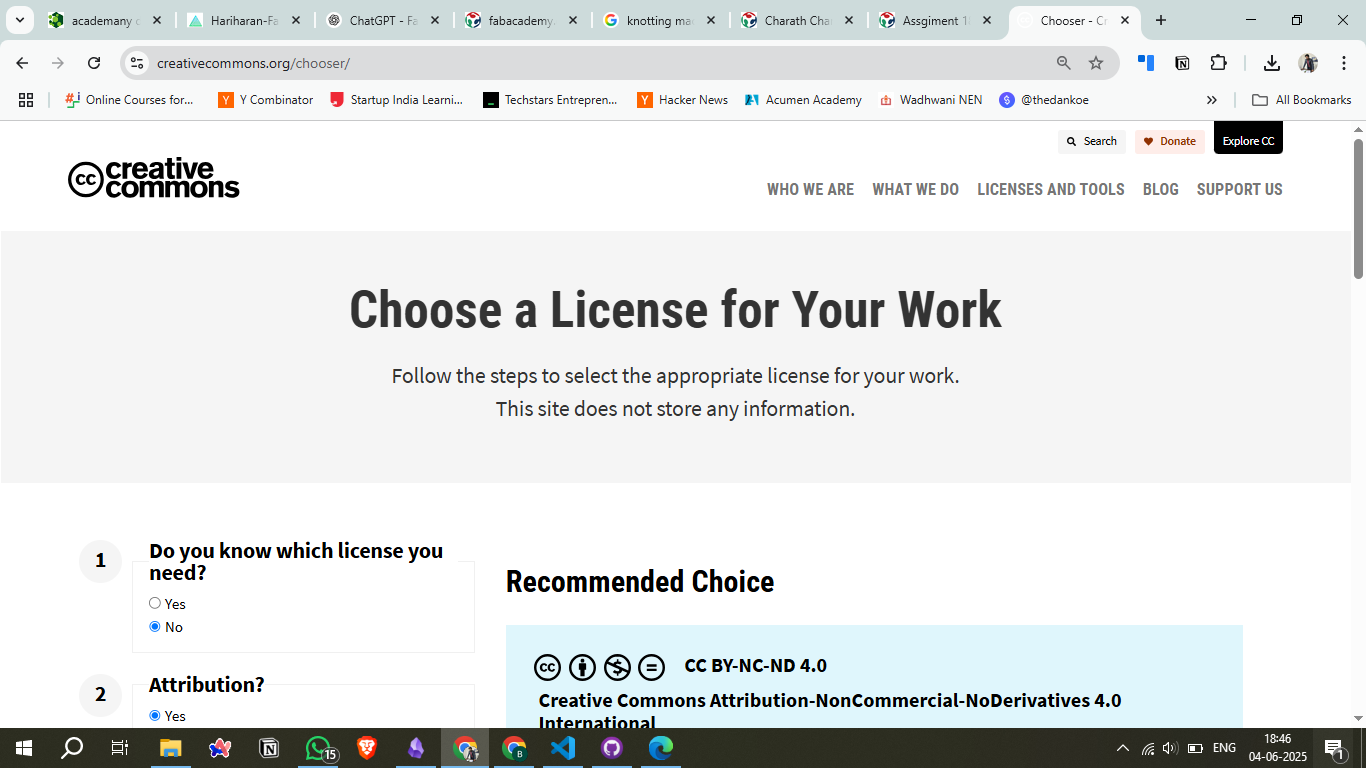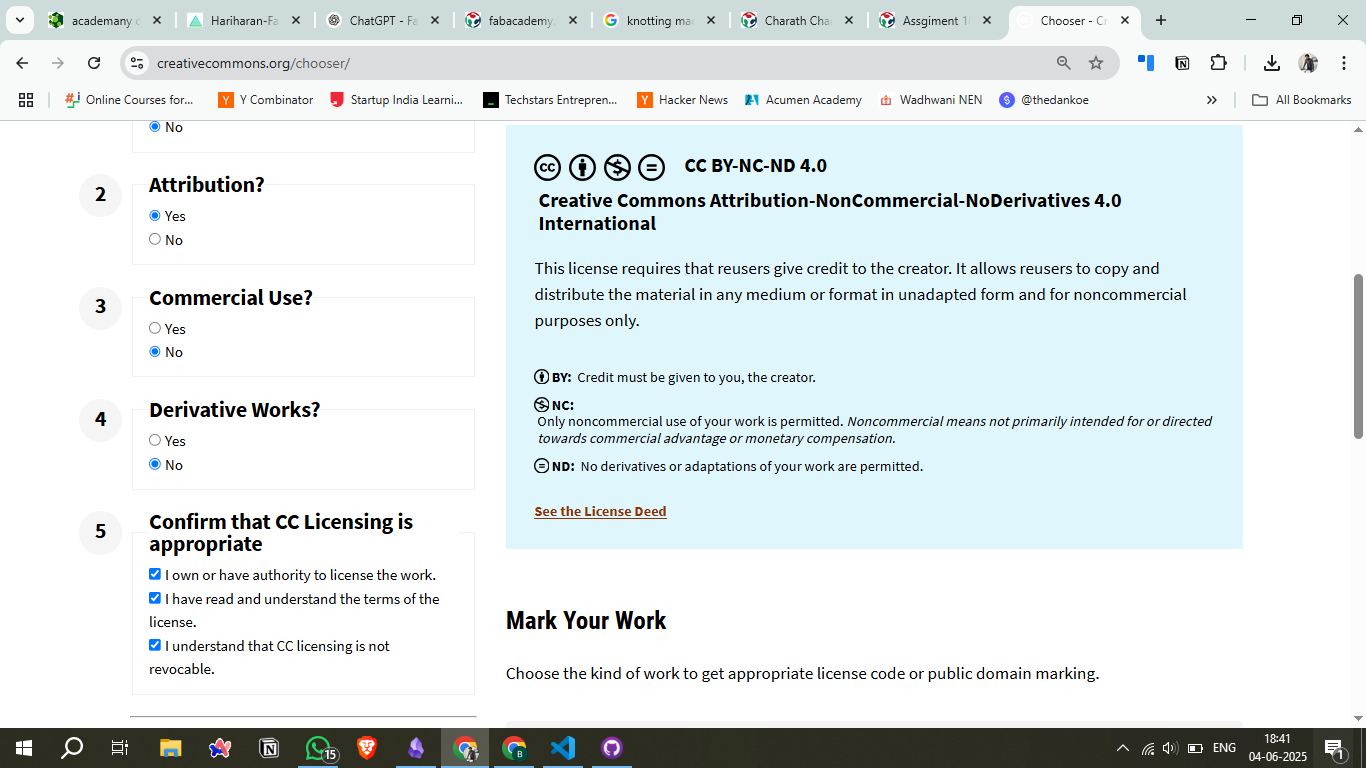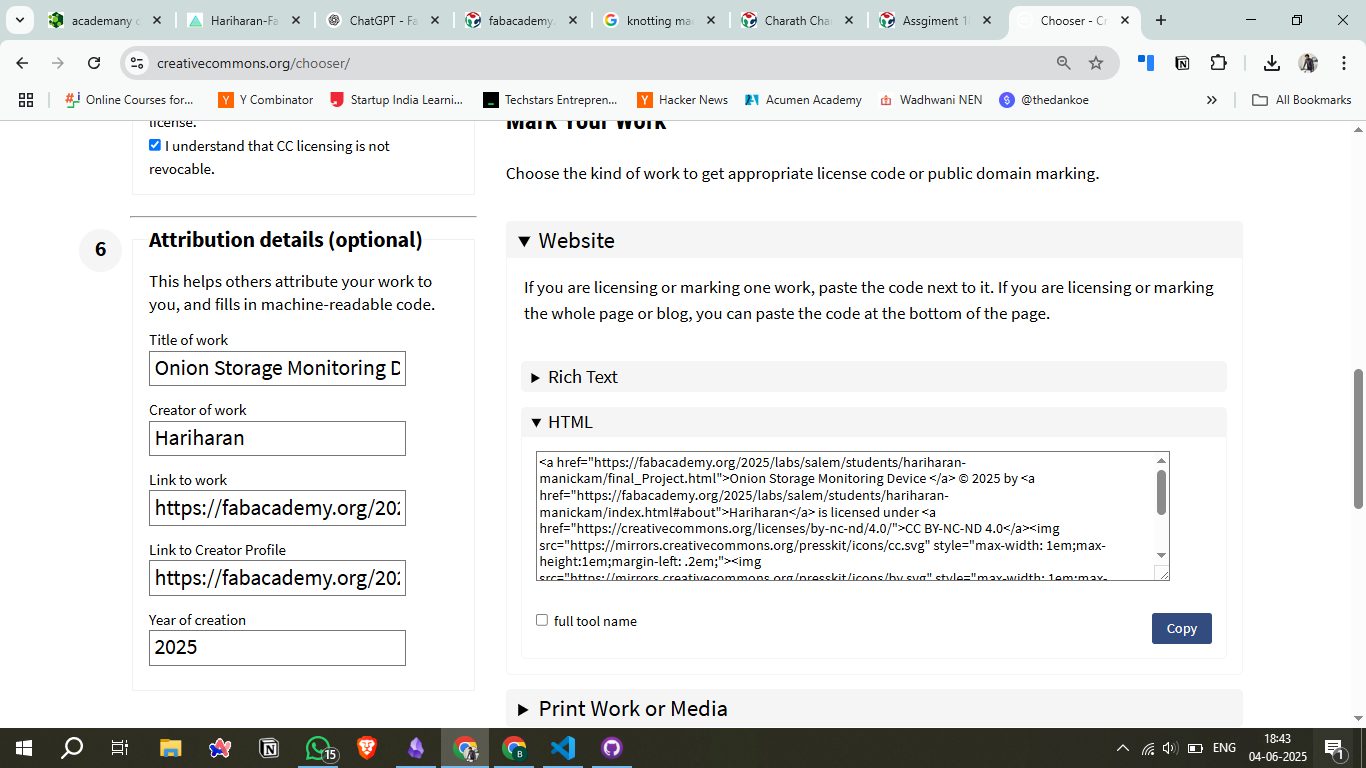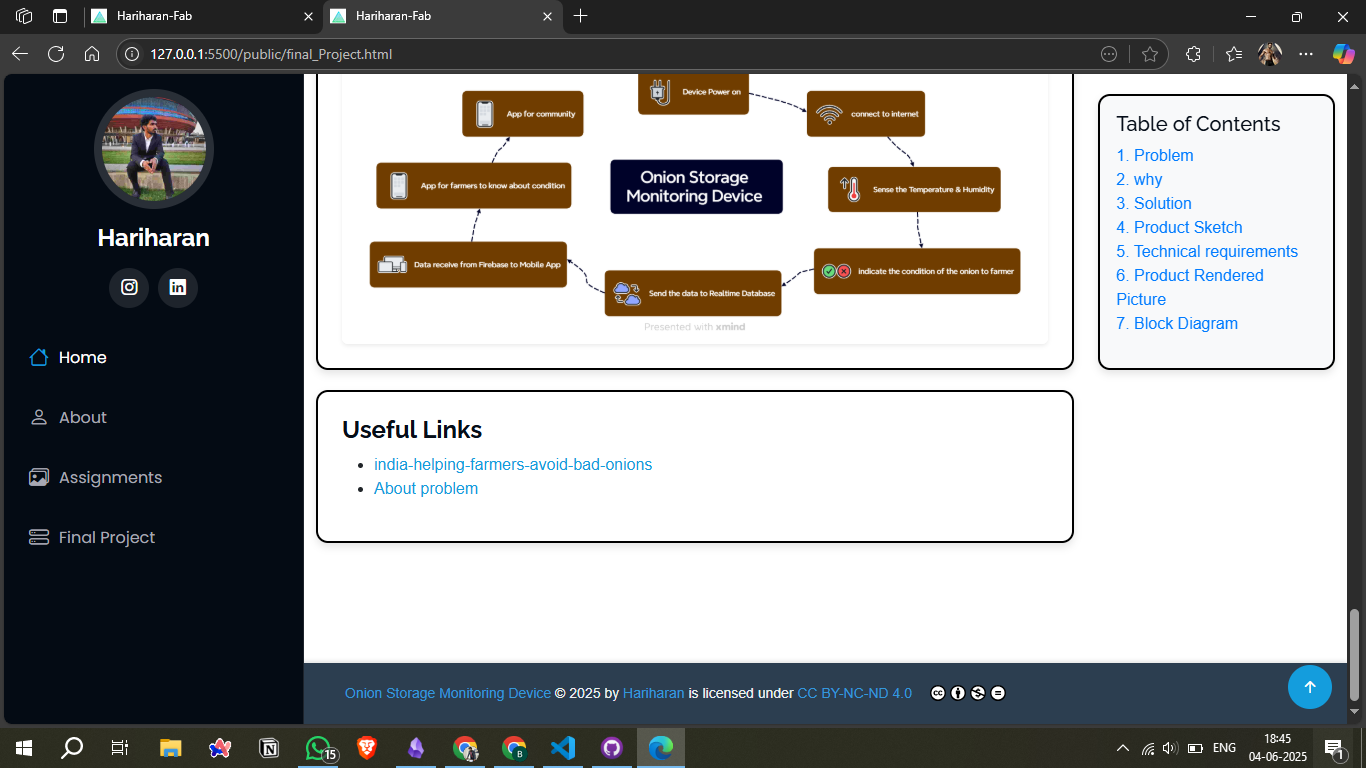Week 19
Assignment: Invention, Intellectual Property and Income
Individual assignment
What is an Invention?
An invention is a novel idea or creation that provides a new solution to a problem. It could be a device, method, process, or improvement that has not existed before. Inventions often arise from observing real-world problems and creatively finding ways to solve them.
Invention in Product Development Context
In the context of innovation and product development (like your Fab Academy project), an invention typically includes:
- A technical novelty (new mechanism, process, or system)
- Practical utility (it performs a useful function)
- Inventive step (not obvious to others in the same field)

Intellectual Property (IP)
Intellectual Property (IP) refers to the legal rights that protect creations of the human mind. These can include inventions, artworks, software, logos, brand names, and even specific designs. IP gives creators ownership and control over how their work is used, shared, or commercialized.
In the context of product development or Fab Lab projects, IP is crucial for protecting innovative ideas and ensuring creators receive credit or income for their work. It also helps decide whether to keep your project open for the public or pursue commercialization.

Types of Intellectual Properties
- Patents are granted for new inventions, processes, or machines. They give exclusive rights to the inventor for a limited period—usually up to 20 years—to prevent others from making, using, or selling the invention without permission.
- Copyrights protect creative works such as writings, music, software code, and design documentation. The protection usually lasts for the lifetime of the author plus an additional 60 to 70 years, depending on the country.
- Trademarks protect brand elements such as names, logos, and slogans that distinguish products or services in the market. They can be renewed indefinitely, typically every 10 years.
- Design Rights protect the unique visual appearance or shape of a product, such as the casing of an electronic device or an artistic hardware design. These rights usually last between 10 to 15 years.
- Trade Secrets protect confidential information like formulas, processes, or methods used in business that are not publicly known. Unlike other IP types, trade secrets can last indefinitely as long as the information remains confidential.





Open Source and Creative Commons Licenses
Open Source and Creative Commons licenses provide structured ways for creators to share their work with others, either freely or with certain rules.
Open Source Licenses
Open Source Licenses are most commonly used for hardware and software. They allow people to use, modify, and redistribute the original work. For example:
- The MIT License is very permissive and allows wide reuse with attribution
- The GNU General Public License (GPL) requires that any modified versions also remain open source
- The Apache License is ideal for software projects that also want to protect patents
Creative Commons Licenses
Creative Commons Licenses, on the other hand, are mostly used for non-software content like images, documents, videos, and educational materials. For instance:
- The CC BY license allows others to use and adapt your work as long as they give proper credit
- The CC BY-SA license adds a requirement that any new creations based on your work must be shared under the same license
- The CC BY-NC license allows use only for non-commercial purposes
- Finally, CC0 places a work in the public domain, with no restrictions

Creative Commons Licensing Process for Onion Storage Monitoring System
In order to appropriately license my final project and protect both the originality and integrity of my work, I began by visiting the official Creative Commons license chooser tool available at https://creativecommons.org/chooser/.

Creative Commons License Implementation
To ensure my project is shared responsibly while protecting its original form, I have applied a Creative Commons Attribution-NoDerivatives 4.0 International (CC BY-ND 4.0) license to my work. This license allows others to copy and redistribute the material in any medium or format, even for commercial use, as long as they provide appropriate credit to me as the creator. However, they cannot modify or adapt the content in any way.
This decision was made to strike a balance between openness and maintaining the integrity of the original work. The license details and attribution were generated using the Creative Commons License Chooser and embedded in the footer section of my Fab Academy website using HTML code.
License Implementation Details
Here is how the license is implemented on my site:
- The title of the work: Onion Storage Temperature Monitoring Device
- Creator: Hariharan
- License: CC BY-ND 4.0
- Attribution with icon badges for Creative Commons, Attribution, and No Derivatives
- Applied directly in the
index.htmlfooter using the code snippet provided by the Creative Commons generator

By using this license, I clearly communicate how my work can be reused while ensuring no changes are made that might misrepresent the original intent or function of the invention.


Future Plans & Business Model
Future Plans
The Onion Storage Temperature Monitoring Device is currently in the prototype stage, designed to help small-scale farmers and rural storage units maintain optimal temperature conditions and reduce post-harvest losses. Going forward, the goal is to evolve this project into a scalable and affordable product suitable for diverse crops and climatic zones.
Key next steps include:
- Field testing the device in real farm and storage conditions to gather real-time data and improve reliability.
- Expanding features such as remote SMS alerts, cloud data logging, solar power integration, and multi-sensor compatibility (for gases, humidity, etc.).
- Design optimization to reduce size, increase durability, and minimize production cost.
- User feedback collection from farmers and warehouse operators for usability improvements.
- Pilot deployment in selected agricultural zones through partnerships with NGOs, AgriTech firms, or government schemes.
Eventually, the system could be adapted for other domains like poultry farms, dairy storage, or cold chains.
Business Model
To make the solution both impactful and financially sustainable, the following business model is proposed:
Target Market
Small and medium-scale farmers, rural cooperatives, cold storage units, and agri-entrepreneurs in developing regions.
Value Proposition
- Affordable, plug-and-play environmental monitoring
- Reduces crop losses due to spoilage
- No internet dependency, suitable for low-infrastructure areas
Revenue Streams
- Direct device sales through agri-retailers and co-operative networks
- Subscription model for premium services like data logging, analytics dashboard, or SMS alerts
- B2B partnerships with AgriTech startups, NGOs, and government rural development programs
- Customization and consultancy for larger storage projects or NGOs
Distribution Strategy
- On-ground demos and trials through farmer producer organizations (FPOs)
- Integration with existing agriculture hardware shops and Krishi Kendras
- Participation in agri-exhibitions and startup expos
